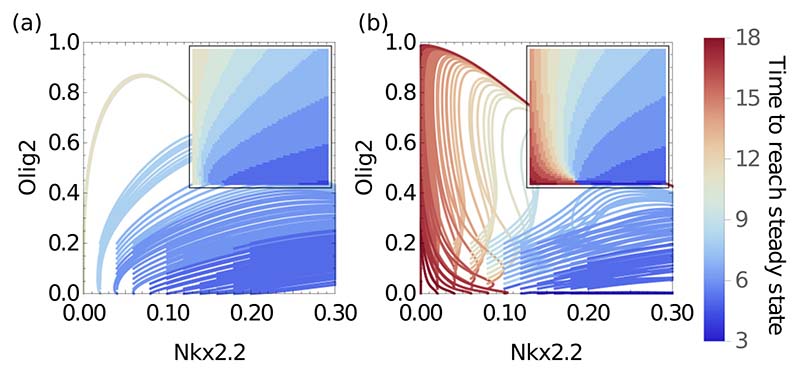FIG. 8.
Trajectories from multiple initial conditions starting near zero for Olig2 and Nkx2.2 in the p3 region (p = 0.1). The comparison emphasises the robustness provided by the memory functions [ZMs, (b)] in comparison to a memoryless system [QSS, (a)]. All trajectories reach the same attractor with high Nkx2.2 and low Olig2. The ZMs system behaves almost identically to the full system, with transient increases in Olig2 and large delays in reaching the steady state from a variety of initial conditions. Color indicates time taken to reach final steady state, quantified as Nkx2.2 deviating less than 1% from its asymptotic concentration. Insets have same axes as main plots and show time to final steady state from a given initial position.

